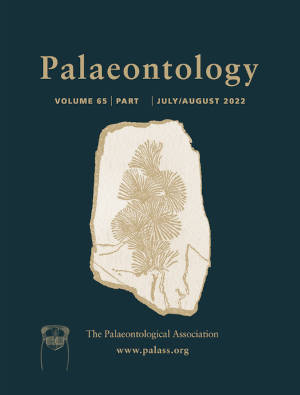Article: Gradual warming prior to the end-Permian mass extinction
Publication: Palaeontology
Volume:
65
Part:
5
Publication Date:
2022
Article number:
e12621
Author(s):
Jana Gliwa, Michael Wiedenbeck, Martin Schobben, Clemenz V. Ullmann, Wolfgang Kiessling, Abbas Ghaderi, Ulrich Struck, and Dieter Korn
Abstract
Abstract The biggest known mass extinction in the history of animal life occurred at the Permian–Triassic boundary and has often been linked to global warming. Previous studies have suggested that a geologically rapid (<40 kyr) temperature increase of more than 10°C occurred simultaneously with the main extinction pulse. This hypothesis is challenged by geochemical and palaeontological data indicating profound environmental perturbations and a temperature rise prior to the main extinction. Using secondary ion mass spectrometry (SIMS), we measured oxygen isotope ratios from Changhsingian (late Permian) ostracods of north-western Iran. Our data show that ambient seawater temperature began to rise at least 300 kyr prior to the main extinction event. Gradual warming by approximately 12°C was probably responsible for initial environmental degradation that eventually culminated in the global end-Permian mass extinction.
